Introduction: The Art and Science of Pickle Packaging – Why It Matters More Than Ever
Pickles, a savory staple enjoyed across diverse cultures, owe their enduring quality and widespread appeal to a factor often overlooked: advanced pickle packaging. This critical process involves meticulously storing pickles to preserve their distinctive taste and aroma, while rigorously shielding them from detrimental external factors such as light and moisture.
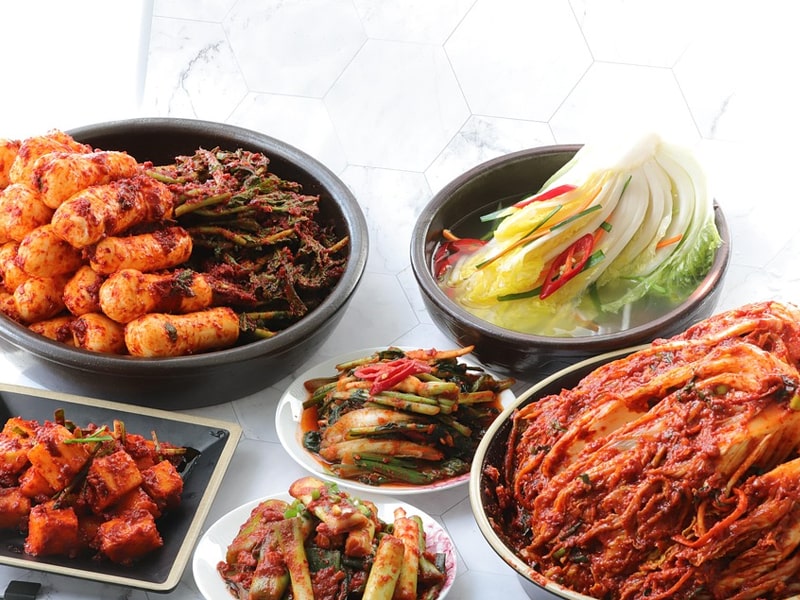
Proper pickle packaging transcends mere logistical necessity; it stands as a cornerstone of product integrity and market success. Pickles are inherently hygroscopic, meaning they readily absorb moisture, and are susceptible to external elements like air and light that can compromise their quality. Airtight and effective packaging significantly prolongs the product’s taste, flavors, aroma, and overall quality, thereby extending its shelf life. Furthermore, the use of inert packing materials is crucial. These materials are specifically chosen because they do not react chemically with the pickle ingredients, ensuring the authentic integrity and original taste are meticulously maintained.
Beyond preservation, packaging plays a vital role in consumer health and brand appeal. Correct packaging acts as a critical barrier against rancidity and spoilage caused by microorganisms, thereby safeguarding the health benefits that pickles offer. From a commercial standpoint, good, premium, and eye-catching packaging elevates product visibility and appeal, effectively drawing consumers to the product. This visual impact is a powerful marketing tool. Lastly, correctly packed pickles, especially those utilizing premium materials, enable smooth global distribution and facilitate easy shipment for branding and sales purposes, making them readily available to consumers worldwide.
The multifaceted nature of pickle packaging reveals that it serves a dual role: it acts as both a scientific barrier and a strategic marketing tool. The technical aspects, such as extending shelf life, preserving originality, and ensuring health benefits, are deeply rooted in food science and preservation principles. Simultaneously, the emphasis on making the product look attractive and facilitating transportation and sale highlights crucial marketing, branding, and logistical considerations. This co-existence and equal importance of scientific and commercial aspects mean that for machinery manufacturers, the value proposition extends beyond merely providing efficient equipment. Their machines must be capable of delivering precision and hygiene for preservation, and they must also enable diverse, aesthetically pleasing, and functional packaging designs that meet evolving consumer preferences and global distribution demands. This necessitates versatile machinery that supports both the scientific integrity and the commercial viability of the product, thereby broadening the market appeal and strategic importance of the offerings.
This report will delve deeply into the scientific principles, optimal material choices, cutting-edge machinery, and innovative solutions that define the future of modern pickle packaging. The aim is to provide a comprehensive guide for businesses seeking to elevate their product quality and market presence in a competitive global landscape.
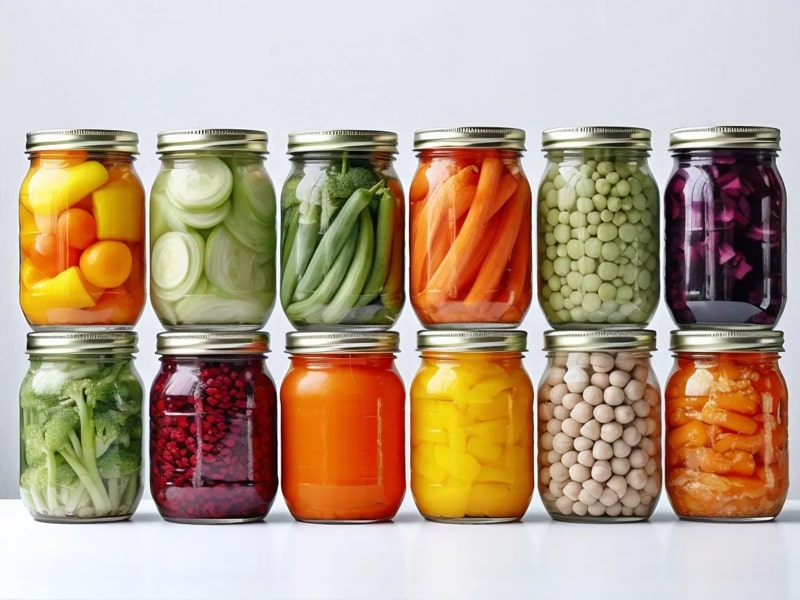
Beyond the Jar: The Scientific Principles Driving Modern Pickle Preservation
Pickles, as savory mixtures of fruits and vegetables, are inherently susceptible to spoilage. Their unique composition necessitates specific preservation methods to enhance fermentation and taste while rigorously preventing deterioration. Their hygroscopic nature and susceptibility to external factors like moisture, air, and light can significantly compromise their quality.
Advanced Preservation Techniques: The Science of Extended Freshness
Modern pickle preservation relies on sophisticated techniques that go beyond traditional methods, actively controlling the environment within the package to extend shelf life and maintain sensory quality.
● Vacuum Sealing is a highly effective technique for preserving freshness. By removing air from the packaging, vacuum sealing actively prevents the growth of bacteria and mold, which are the primary culprits of spoilage. This process is crucial for maintaining the natural flavor, texture, and color of pickles, often reducing the need for artificial preservatives. The absence of air allows vacuum-sealed pickles to remain fresh for extended periods, even without refrigeration, making it a reliable solution for brands prioritizing high-quality, fresh products.
● Nitrogen Flushing represents a modern innovation in shelf life preservation. This technique involves infusing inert nitrogen gas into the packaging, displacing oxygen. This process fundamentally inhibits oxidation, which negatively impacts food flavor and color. As nitrogen is an inert gas, it also protects pickles from moisture and air damage, ensuring their texture and quality remain intact. This technique is particularly valuable for international exports where products face long storage and transit times. While both vacuum packing and nitrogen flushing address oxygen, their approaches differ. Nitrogen flushing aims to displace oxygen almost entirely, typically achieving a 99.0% concentration of nitrogen. In contrast, vacuum packing removes most air but leaves a residual “optimum level” of oxygen, dropping from 21% to 2.1%, which is insufficient for significant microbial growth.
● Modified Atmosphere Packaging (MAP) is a sophisticated technique where the concentration of specific gases, such as oxygen, carbon dioxide, and nitrogen, within the packaging is precisely manipulated. This controlled environment effectively slows down the decay process of pickles, maintaining their flavor, texture, and color. MAP is especially advantageous for marketers aiming to reduce preservatives and cater to health-conscious consumers. Its ability to facilitate a long shelf life makes it widely used in both local and export markets.
These advanced methods are not merely about extending shelf life; they are about maintaining the sensory quality of the product, reducing reliance on artificial additives, and meeting the evolving demands of a global, health-conscious consumer base. The efficacy of these sophisticated preservation systems is entirely contingent upon the chosen packaging material’s ability to maintain the precisely manipulated gas concentrations. If the material is permeable, the advanced technology is rendered ineffective. This highlights that achieving optimal pickle preservation is not about choosing one technology over another, but about a synergistic relationship between the preservation method and the packaging material. Businesses must adopt a holistic approach, ensuring their selected packaging material possesses the necessary barrier and inert properties to support the chosen preservation technology.
Material Properties and Their Impact on Shelf Life
The choice of packaging material is fundamental to pickle preservation. Materials must act as effective barriers against dust, gases, moisture, and light, all of which can degrade pickle quality. Equally critical is the inertness of the packing materials, meaning they must not react chemically with the pickle ingredients, thereby preserving the product’s integrity and original taste.
The strategic choice between transparent and opaque packaging is also important. Transparent packaging allows consumers to visually inspect the product, enhancing perceptions of freshness and purity. Conversely, opaque containers might offer superior light protection for certain pickle types or ingredients sensitive to UV degradation.
Specific material examples and their attributes include:
● Glass: A long-standing popular choice for decades, glass jars are non-porous, effectively protect pickles from dust, are easy to clean, and are known to keep pickles fresh longer than plastic. Their inert nature provides a robust barrier against external elements and allows for clear visibility of the pickles inside, enhancing perceived freshness.
● Plastic: This is a versatile category, encompassing various types with distinct properties. Polyethylene offers excellent protection from moisture and is free from plasticizers. Polypropylene is stiffer and provides better clarity. Polyvinyl chloride (PVC) features low gas transmission, is transparent, and heat-sealable. Polyester and polyamide are stiffer and offer good protection from dust and gases.
● Metal: Metal jars are a popular choice for storing pickles due to their reliability. They are impermeable to physical factors, leading to a significantly longer shelf life, and are well-suited for easy storage and transportation, especially over long distances.
The evolving consumer demand for both natural freshness and environmental sustainability is a key driver for packaging innovation. Modern consumers increasingly opt for health-conscious food choices, which often translates to a desire for fewer artificial preservatives. This aligns with the capabilities of advanced preservation methods like MAP. Concurrently, there is a strong market pull towards products packaged responsibly, evident in the trend towards biodegradable or compostable pouches and global regulations mandating the use of recycled plastics. This trend directly influences material science and machinery design, requiring packaging solutions that support both extended shelf life through natural means and environmental responsibility. Machinery must be flexible enough to handle these new, often more delicate or specialized, sustainable materials while maintaining high performance.
Choosing Your Vessel: A Comprehensive Guide to Pickle Packaging Materials and Formats
Pickle packaging materials are broadly classified into two main categories: flexible and rigid packing. Each offers distinct advantages and disadvantages that influence product protection, consumer convenience, and logistical considerations.
Classification of Pickle Packing: Flexible vs. Rigid
Flexible Pickle Packing is adaptable and suitable for holding pickles, often featuring convenient elements like zipper-seals for easy re-use. Examples include plastic pouches, pillow bags, sachet pickle packs, and re-closeable zipper bags. Their advantages include lightweight nature, compact design, minimal material usage, and resealable functions for consumer convenience and re-use. They are also easy to carry and cost-effective, coming in various shapes and sizes. However, a crucial consideration is that flexible packaging generally offers less protection compared to rigid counterparts, which can raise concerns about shelf life and overall product quality.
Rigid Pickle Packing is characterized by its hard and heavy nature, providing robust protection. Examples include traditional glass jars, sturdy plastic containers, and durable metal cans. The primary advantages of rigid packaging lie in its ability to provide a strong barrier against external factors and its impermeable nature, which contributes to reliable product preservation.
The choice between flexible and rigid packaging involves a critical strategic trade-off between consumer convenience and fundamental product protection. Flexible packaging is lauded for its lightweight nature, cost-effectiveness, and consumer convenience, but it offers less protection, potentially impacting shelf life. Conversely, rigid packaging provides superior barrier properties and extended shelf life but comes with greater weight and potentially higher transportation costs. This is not a simple “better” or “worse” choice, but a complex balancing act. The selection of packaging material is not merely a design or cost consideration; it is a fundamental business decision that impacts market positioning, logistics, and, most importantly, product integrity over time.
In-depth Analysis of Specific Materials and Their Attributes
Glass Pickle Packing has enjoyed enduring popularity for decades. Glass jars are non-porous, effectively protect pickles from dust, are easy to clean, and are known to keep pickles fresh longer than plastic. As an inert material, glass provides a robust barrier against external elements and allows for clear visibility of the pickles inside, enhancing perceived freshness.
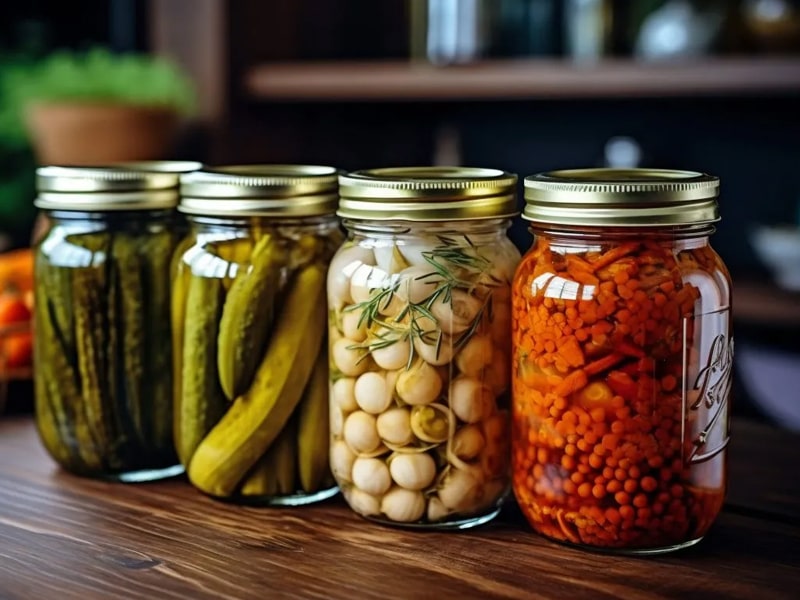
Metal Pickle Packing is a popular choice for storing pickles due to its reliability. Metal jars are impermeable to physical factors, leading to a significantly longer shelf life, and are well-suited for easy storage and transportation, especially over long distances.
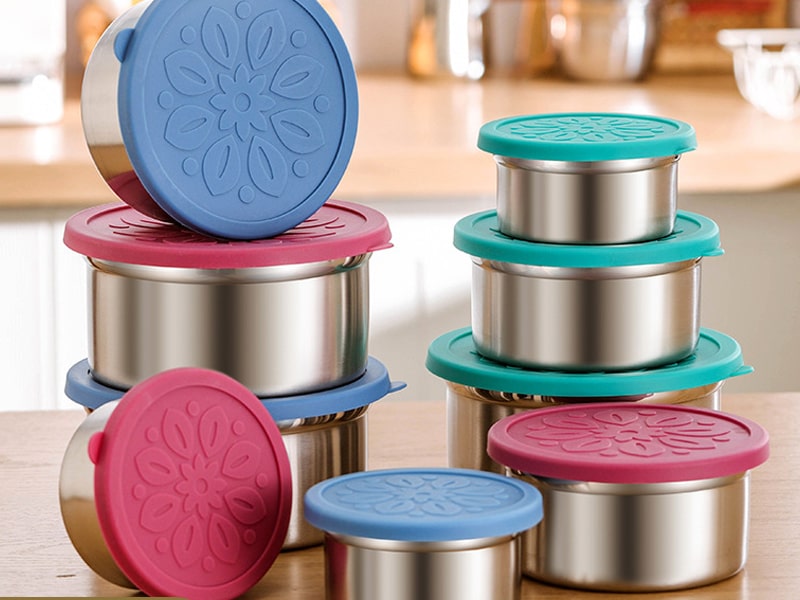
Plastic Pickle Packing involves the widespread use of good quality plastic bags, bottles, or jars. Different types offer specific properties:
● Polyethylene: Provides excellent protection from moisture and is free from plasticizers.
● Polypropylene: Is stiffer and offers better clarity.
● Polyvinyl Chloride (PVC): Features low gas transmission, is transparent, and heat-sealable.
● Polyester and Polyamide: Are stiffer and provide good protection from dust and gases.

Notably, round plastic containers are a top choice due to their ease of use, stability during transport (attributable to uniform pressure distribution on the container walls), and reduced susceptibility to warping or damage.
Innovative Material Features and Modern Trends
Innovation in pickle packaging materials is increasingly driven by highly specific product needs and an enhanced focus on the end-consumer experience.
The Press Filter for round plastic containers is a significant innovative technology developed to enhance pickle quality. This filter actively regulates pressure within the container and removes excess air, which not only extends shelf life but also critically enhances flavor and texture by ensuring the brine consistently covers the pickles. This goes beyond generic material improvements, representing a targeted solution to enhance the product’s quality and the user’s interaction with it.
Sustainable and Eco-Friendly Packaging is a rapidly accelerating trend driven by growing global consciousness towards environmental impact. This includes the development and adoption of biodegradable or compostable pouches and adherence to global regulations mandating the use of recycled plastics. This indicates that the packaging industry is moving towards hyper-specialized solutions that address niche product challenges and optimize the consumer experience, ensuring products are not only naturally preserved but also packaged responsibly.
Aesthetic and Functional Innovations are also shaping the market. The rise of minimalist and modern packaging designs, featuring clean typography and neutral colors, is gaining popularity. Transparent packaging remains popular for showcasing product freshness. Wider openings are also gaining traction for mess-free dispensing, enhancing consumer convenience.
The following table provides a comparative overview of common pickle packaging materials:
| Material Type | Key Properties | Benefits | Best Use Cases |
| Glass | Non-porous, inert, strong barrier, rigid, heavy | Extended shelf life, premium feel, product visibility, easy to clean | Premium products, traditional appeal, long-term storage, clear product display |
| Metal | Impermeable, rigid, opaque, durable, heavy | Very long shelf life, excellent protection, transport stability | Long-distance export, products sensitive to light, robust packaging needs |
| Polyethylene (PE) | Flexible, excellent moisture barrier | Cost-effective, good moisture protection, versatile | Flexible pouches, budget-friendly options, general moisture protection |
| Polypropylene (PP) | Stiffer than PE, good clarity, flexible | Better clarity, increased rigidity, heat-sealable | Pouches requiring more structure, products benefiting from visual clarity |
| Polyvinyl Chloride (PVC) | Low gas transmission, transparent, heat-sealable | Good gas barrier, transparency, heat-sealable | Transparent containers where gas transmission is a concern |
| Polyester/Polyamide | Stiffer, good dust/gas protection, flexible | Enhanced protection from dust and gases, durability | Multi-layer flexible packaging, products requiring robust barrier properties |
| Flexible Pouches (General) | Lightweight, compact, often resealable | Cost-effective, consumer convenience (easy carry/re-use), space-saving | Single servings, on-the-go products, modern branding, sustainability focus (if biodegradable options used) |
The Powerhouse Behind Production: A Deep Dive into Pickle Packaging Machinery
Modern pickle packing is impossible without specialized machinery. These machines are purpose-built equipment designed to efficiently and precisely package pickled products, playing a pivotal role in increasing efficiency and quality across the food industry.
Categorization by Automation Level: Scaling Your Production
The level of automation in pickle packaging machines directly correlates with production scale and efficiency.
Manual Pickle Packing Machines require significant human intervention. Operators manually place containers for filling, and a pre-determined amount of pickle is dispensed by a pedal or hand-operated handle. Manual removal is also required after filling. These are typically suitable for very small-scale production or artisanal operations.
Semi-Automatic Pickle Packing Machines integrate advanced technology but still necessitate manual feeding of packaging material. An operator adjusts parameters for filling, and once filled, materials are conveyed for subsequent sealing and labeling. They offer a step up in efficiency from purely manual systems.
Automatic Pickle Packing Machines are the cornerstone of modern, high-volume production. These machines are designed for quick and accurate packing of both solid and semi-solid products into a wide range of containers, including jars and cans of various sizes. They feature automatic and rapid filling, often with a built-in weighing machine for precise weight adjustment, and parameters can be easily set by the operator. These machines significantly improve efficiency, consistency, and are ideal for large factories aiming for high production capacity, often integrating sealing, filling, and labeling functions. The modern imperative for pickle packaging is the adoption of integrated, automated packaging lines, driven by the need for scalability, consistency, and reduced operational costs. Businesses are increasingly seeking integrated solutions rather than standalone equipment, as this approach is crucial for achieving high production volumes, maintaining consistent product quality, minimizing human error, and ultimately reducing overall labor and operational costs.
Essential Machine Functions in an Integrated Packaging Line
A comprehensive, automated pickle packaging solution comprises several specialized machines, often working in seamless concert:
● Container Rinsers and Sterilizers: Crucial for hygiene, these machines ensure containers are meticulously clean and sterilized before filling. They utilize high-pressure water and UV rays to effectively eliminate impurities and bacteria, guaranteeing product safety. They are versatile, accommodating various container sizes and materials, and operate at high speeds for efficient cleaning of large quantities.
● Pickle Jar Filling Machine (including weighing machine): This machine provides an efficient and highly accurate solution for dispensing solid or semi-solid pickle products into jars and cans of diverse sizes. It is designed for user-friendliness, allowing for easy adjustments. The integrated weighing machine is key to ensuring each jar contains the precise amount of product, enhancing consistency and minimizing waste.
● Pickle Jar Sealing Machine: Essential for product preservation, this machine ensures that jars are sealed tightly and are leak-proof. It is compatible with various container sizes and materials and works seamlessly with the filling machine. It often creates a vacuum seal, vital in preventing the growth of bacteria and other microorganisms that can spoil the pickle. The sealing process is rapid and efficient, allowing for high-speed packaging without compromising product quality, thereby extending shelf life.
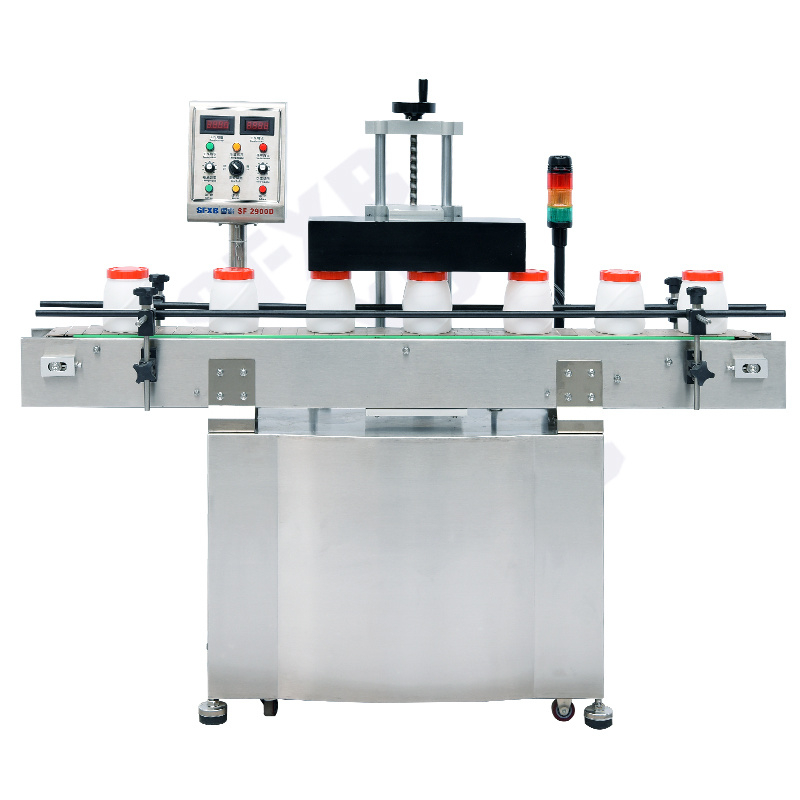 |
| SF-2900D Water-cooled Automatic Electromagnetic Induction Aluminum Foil Sealer |
● Pickle Pouch / Sachet Packing Machine: Specifically designed for smaller portions of pickle products, such as single-serving sachets. These machines are exceptionally efficient, capable of rapidly producing large quantities of sachets by automatically filling, sealing, and cutting them into individual units. They can be customized for specific packaging needs, including pouch size, material, and sealing methods, and typically feature a compact design to optimize space.
● Capping Machine: This machine automatically applies caps or lids to containers, ensuring a secure and leak-proof seal. It is adaptable for various container sizes and materials and integrates smoothly into the overall packaging line. Caps are loaded in bulk, and sensors ensure their proper placement onto pickle jars, leading to quick and error-free capping.
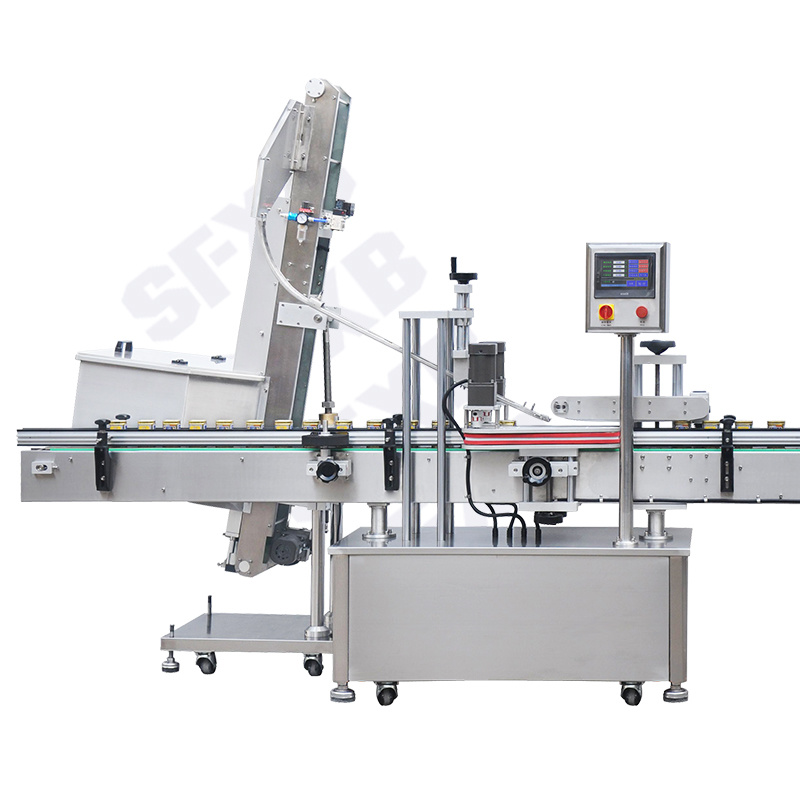 |
| XBZY-80/100 Automatic Capping Machine |
● Label Machine: Responsible for applying labels to containers, providing essential product information and branding. Loaded with pre-printed labels, it applies them consistently and accurately as containers move along a conveyor belt. Labeling machines are highly customizable for different label sizes, designs, and placements, ensuring no wrinkles or misalignments.
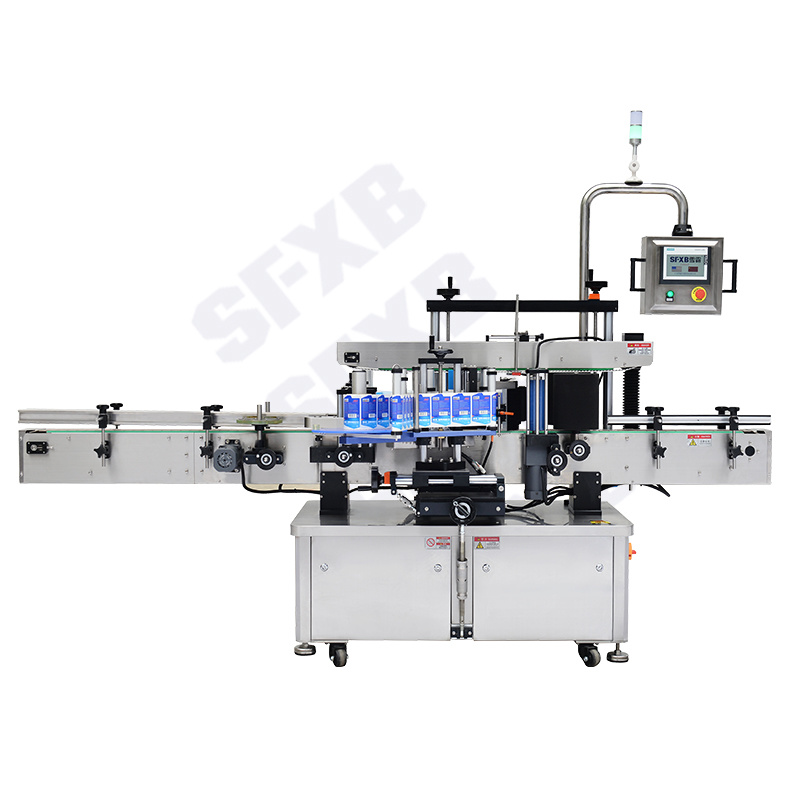 |
| SF-3060 Automatic double-sided labeling machine |
● Coding Machine: This machine prints critical codes or dates (e.g., production date, expiry date, batch codes) on containers, ensuring product traceability and compliance with regulatory standards. Automated coding is significantly faster than manual processes, leading to higher production rates and reduced costs. They can be altered to use various code formats, fonts, and placements.
● Container Unscrambler: Positioned at the start of the line, this machine sorts and arranges containers into the correct orientation and position for subsequent filling and sealing. This significantly improves overall line efficiency and reduces the need for manual labor. Highly customizable for different container shapes and sizes, it loads containers in bulk into a hopper, then sorts, aligns, and consistently feeds them to the filling machine.
 |
| XBLP-150 High Speed Bottle Unscrambler |
Precision engineering and rigorous hygiene are non-negotiable foundational requirements for these machines. The emphasis on container rinsers and sterilizers using high-pressure water and UV rays to remove impurities and bacteria, alongside integrated weighing machines for precise product amounts, underscores this. The use of food-grade stainless steel for construction further highlights the commitment to uncompromising hygiene and product safety. These are not just desirable features but critical design principles that ensure food safety, extended shelf life, and regulatory compliance.
Machine Configurations: Optimizing for Scale and Flow
Machine configurations vary to optimize for different production scales and operational flows.
Based on the number of Heads:
● Single Head Pickle Packing Machines are used for specialized packaging of small, accurate, and efficient pickle packs. The filling process uses a single head, often with additional features for sealing and labeling. They are suitable for small-scale production.
● Dual Head Pickle Packing Machines are more efficient and quicker than single-head machines, as two heads work simultaneously, handling two packs at once.
● Multi-Head Pickle Packing Machines are designed for maximum productivity, significantly faster and more efficient than single and dual-head machines. Each head dispenses a precise amount of product, making them ideal for large-scale production.
Based on Filling Orientation:
● Inline Pickle Packing Machines feature a linear configuration where entrance, filling, and discharging steps occur in a direct, sequential manner.
● Rotary Pickle Packing Machines carry out the entire packing procedure rotationally, with products fed, filled, and discharged in a rotational fashion. These are generally preferred for very high production capacities.
Pickle packaging machines are indispensable not only for dedicated pickle-making businesses but also for a wide array of other food processing industries. They ensure hygienic, efficient, and high-quality packaging for various containers (jars, bottles, pouches), facilitate secure, tamper-proof packaging for retail and export (preserving freshness during transit), and are adaptable for both small-scale and large-scale production, leading to less waste and greater productivity. Ultimately, automated packaging ensures uniformity in each product, contributes to longer shelf life, and ensures adherence to critical safety standards.
The following table summarizes essential pickle packaging machine types and their core functions:
| Machine Type | Core Function | Key Benefits |
| Container Rinser/Sterilizer | Cleans and sterilizes containers | Enhanced hygiene, product safety, compliance with food standards |
| Pickle Filling Machine | Fills containers with precise product amounts | Product consistency, reduced waste, increased efficiency |
| Pickle Jar Sealing Machine | Seals jars airtight and leak-proof | Extended shelf life, preservation of freshness, prevention of contamination |
| Pickle Pouch/Sachet Packing Machine | Packages small portions into pouches/sachets | Operational efficiency for small formats, cost-effectiveness, consumer convenience |
| Capping Machine | Applies caps or lids securely | Secure sealing, leak prevention, high-speed operation |
| Label Machine | Applies labels for branding and information | Brand compliance, consistent label application, clear product information |
| Coding Machine | Prints codes/dates for traceability | Product traceability, regulatory compliance, higher production rates |
| Container Unscrambler | Sorts and aligns containers for the production line | Improved line efficiency, reduced manual labor, consistent feeding to subsequent machines |
Innovations Shaping Tomorrow: Cutting-Edge Technologies in Pickle Packaging
The pickle packaging industry is continuously evolving, driven by technological advancements aimed at enhancing product quality, operational efficiency, and environmental responsibility.
Precision Filling and Foaming Control
Integrated weighing systems are critical in ensuring accurate, consistent filling of each container, which directly translates to reduced product waste and improved overall efficiency. Beyond basic filling, specialized innovations like diving nozzle mechanisms are crucial. These are specifically designed to prevent undesirable foam or bubble formation on the upper level of pickles during filling, ensuring a clean, aesthetically pleasing pack without spillage. This drive for “perfect product presentation” and “optimized operational efficiency” is fueling highly niche and specialized machine innovations that go beyond core functionality.
Innovative Material Features and Enhanced Product Integrity
The Press Filter for plastic containers is a significant innovation. It actively regulates pressure within the container and removes excess air, which not only extends shelf life but also critically enhances flavor and texture by ensuring the brine consistently covers the pickles. This demonstrates a commitment to delivering superior product quality and maximizing operational finesse.
Sustainability at the Forefront
The accelerating trend towards sustainable solutions is evident in the development and adoption of biodegradable or compostable pouches. Furthermore, increasing global regulations are mandating manufacturers to incorporate recycled plastics into their packaging, pushing the industry towards a more circular economy. The emergence of smart packaging solutions, though nascent, also promises enhanced consumer confidence through features like freshness indicators or traceability information accessible via QR codes.
Unwavering Focus on Machine Quality and Durability
Leading manufacturers construct machines from robust materials like 2mm thickness #304 or #316 stainless steel, chosen for their high corrosion resistance and ease of cleaning, which is crucial for food-grade environments. The strategic procurement of key components from renowned global manufacturers such as Siemens, SEW, SMC, and Schneider ensures accurate control, minimizes maintenance requirements, and significantly extends the operational life of the machinery, representing a long-term investment. This investment in premium machine components and robust construction reflects a strategic long-term business approach focused on reliability and reduced total cost of ownership. Sophisticated industrial buyers are increasingly adopting a total cost of ownership perspective, recognizing that while cheaper machines might have a lower initial outlay, they often lead to higher maintenance costs, frequent downtime, and reduced productivity over time.
Maintaining Perfection: Quality Control and Troubleshooting in Pickle Packing Operations
Rigorous quality testing is paramount in pickle packing. It ensures that the packaged product is suitable for transportation without leakage or contamination, directly contributing to business success and brand reputation.
Critical Quality Testing Methods
● Bath Leak Testing: This efficient and cost-effective method involves submerging a pickle pack in a vacuum-controlled water tank. The appearance of tiny bubbles definitively indicates the presence of holes or leakage.
● Pressure Decay Testing: In this method, the pickle pack is placed in a reduced, controlled environment and subjected to pressure. A specialized tester measures the applied pressure, and if the time taken to reach optimum pressure is longer than expected, it signifies a leakage.
● Optical Laser-Based Detection System: This advanced method utilizes laser wavelengths to detect leakage. A narrow beam of infrared (IR) light with CO2 gas helps display signals, and a demonstrated wavelength at a specified location precisely indicates leakage.
Proactive quality control and robust troubleshooting capabilities are indispensable for protecting brand reputation, ensuring consumer safety, and maintaining regulatory compliance. Failures in quality control can lead to severe consequences, including product recalls, significant damage to brand reputation, and costly non-compliance with stringent food safety regulations.
Common Operational Problems and Their Practical Solutions
Even with high automation, the human element of expertise, training, and vigilance remains critical for optimal performance and problem resolution in advanced packaging operations.
● Problem 1: Pickles stuck in the machine: This often occurs due to difficulty in pickle flow, potentially from incorrect hopper installation or material blockage within the machine.
Solution: Reset the hopper setting to facilitate easy flow by gravity. Employing a hopper equipped with a stirrer can significantly improve precision and speed of product delivery.
● Problem 2: Inaccurate Pickle Packing: While machines generally offer high precision, inaccuracies can arise from selecting an incorrect filler type (e.g., using an auger filler, which is not ideal for pickles).
Solution: Utilize a piston filler, which is specifically designed for accurate, volumetric pneumatic filling, ensuring consistent product amounts.
● Problem 3: Foaming in Pickle Packing: The formation of foam on the upper level of pickles during filling is undesirable for aesthetics and quality.
Solution: Implement a diving nozzle mechanism. This specialized nozzle is designed to prevent foam or bubble formation, ensuring a clean packing process without spillage.
● Problem 4: Leakage of Pouch Pickle Packing: Pouches may leak due to malfunctioning or errors in heat sealers.
Solution: Correct the heat sealer settings to ensure the pouch edges are sealed properly. Adjust the heat sealer temperature as needed. Calibrate the entire process using a PLC (Programmable Logic Controller) and always run a test batch before commencing final production.
Understanding Pickle Shelf Life and Spoilage
Pickle shelf life is high but dependent on several factors: the accuracy of the production process, the absence of leakage or cracks in packaging, the type of packing material and machine used, strict sanitary conditions, and how tightly sealed the packaging is (e.g., vacuum-packed or nitrogen-flushed). Ideally, shelf life extends until the next season of pickle vegetables or fruits arrives. Unopened pickle packs typically last six to twelve months. Once opened, refrigeration is strongly recommended to maintain shelf life by inhibiting microbial growth.
To detect spoilage, one can observe abnormalities in color, odor, texture, and taste. Key indicators include: whitish growth (mold) on the surface, a soft or slimy texture (due to yeast progression), bulging jars, tiny bubbles, or a watery broth. Crucially, it is important to differentiate spoilage from natural fermentation, which can cause cloudy brine without indicating that the pickles have gone bad.
Strategic Selection: Key Considerations for Your Pickle Packaging Solution
The acquisition of pickle packaging machinery represents a strategic capital investment, not merely an operational expense, with long-term implications for business growth and return on investment.
Production Requirements: Tailoring to Your Scale
Before selecting any machinery, a clear understanding of production needs is paramount. Businesses must determine whether operations are geared for large-scale or small-scale production. For high production capacity, it is crucial to choose a machine capable of producing around 30-60 packs per minute. Additionally, the chosen machine must be fully compatible with the preferred packaging type.
Efficiency and Scalability: Future-Proofing Your Investment
Considering the inherent efficiency and scalability of the packaging machine relative to projected production capacity is vital. For large factories and high-volume packaging operations, an automatic machine equipped with integrated features like sealing, filling, and labeling capabilities can dramatically increase overall efficiency and allow for seamless scaling of operations. This means clients are seeking strategic partners who understand their business objectives and can provide solutions that scale with their growth.
Maintenance Services: Ensuring Operational Continuity
Prioritizing machines known for requiring less maintenance is essential, as frequent upkeep and part replacements can be a significant and costly burden. If information regarding maintenance services is not readily available, proactively contacting the supplier to inquire about their offerings and support plans is recommended.
Quality and Durability: A Long-Term Investment
To ensure the packaging machine lasts longer and performs optimally over many years, quality and durability must be top priorities. A high-quality machine, characterized by a robust build, can reliably serve a business for an extended period without requiring premature replacement. Always checking the company’s reputation, their after-sales service, and reading customer reviews are crucial steps to accurately gauge the machine’s quality and durability. Supplier reputation and comprehensive after-sales support are as critical as the technical specifications of the machinery itself. For complex industrial machinery, the relationship with the supplier extends far beyond the initial sale, directly impacting trustworthiness.
Cost vs. Investment: A Strategic Financial Decision
While the machine’s price must align with the budget, it is crucial to view this expenditure as a strategic investment rather than a mere cost. High-quality machines, though potentially having a higher initial cost, often prove to be a worthwhile long-term investment due to their longevity, reliability, and reduced operational issues. Comparing prices from various reputable suppliers helps in finding a budget-friendly yet high-quality option. As a general guide, machines for small businesses might range from $4,000 to $10,000, while large production operations may require significant investments, with machines costing up to $50,000.
Conclusion: Elevating Your Brand with Superior Pickle Packaging
Modern pickle packaging represents a sophisticated blend of scientific precision, material innovation, and advanced machinery. Its critical, multifaceted role in extending product shelf life, preserving inherent quality, significantly enhancing market appeal, and facilitating seamless global distribution cannot be overstated.
Making a strategic investment in high-quality, efficient, and reliable pickle packaging machinery is undeniably important. This investment forms a fundamental cornerstone for achieving sustained business success and building an unassailable brand reputation in a competitive market. Businesses are encouraged to proactively explore comprehensive, integrated packaging solutions that not only meet the current stringent industry standards but also anticipate and align with evolving consumer demands for freshness, convenience, and sustainability. This forward-looking approach ensures long-term viability and market leadership.
Frequently Asked Questions (FAQ) about Pickle Packaging
Q1: What is the primary purpose of pickle packaging?
A: The primary purpose of pickle packaging is to preserve the product’s taste, aroma, and protect it from external factors like light and moisture. This extends shelf life, preserves originality, ensures health benefits, makes the product visually attractive, and facilitates easy transportation and sale globally.
Q2: What are the main types of pickle packaging materials?
A: Pickle packaging materials are broadly classified into Flexible (e.g., plastic pouches, sachets) and Rigid (e.g., glass jars, plastic containers, metal cans). Specific materials include glass, various types of plastics (like polyethylene, polypropylene, PVC, polyester, and polyamide), and metal.
Q3: How do advanced techniques like Nitrogen Flushing and Vacuum Sealing work to preserve pickles?
A: Nitrogen Flushing involves displacing oxygen inside the packaging with inert nitrogen gas, which prevents oxidation and microbial growth, thus maintaining taste and freshness. Vacuum Sealing removes air from the packaging to inhibit bacterial and mold growth. Both methods are highly effective in extending shelf life and preserving the natural quality of pickles.
Q4: What types of machines are typically used in an automatic pickle packaging line?
A: A comprehensive automatic pickle packaging line can include a range of specialized machines such as container rinsers and sterilizers, pickle filling machines (often with integrated weighing), pickle jar sealing machines, pickle pouch/sachet packing machines, capping machines, labeling machines, coding machines, and container unscramblers.
Q5: How can one tell if pickle packing has gone bad?
A: One can observe abnormalities in color, odor, texture, and taste. Indicators of spoilage include whitish growth (mold) on the surface, a soft or slimy texture (due to yeast progression), bulging jars, tiny bubbles, or a watery broth. It is important to differentiate spoilage from natural fermentation, which can cause cloudy brine without indicating that the pickles have gone bad.
Q6: What are some common operational problems in pickle packing and their solutions?
A: Common problems include pickles getting stuck in the machine (solution: reset hopper settings, use a stirrer), inaccurate pickle packing (solution: use a piston filler for volumetric accuracy), foaming during filling (solution: employ a diving nozzle mechanism), and pouch leakage (solution: correct heat sealer settings, adjust temperature, calibrate the process).
| References: | |
| 1. | University of Nebraska-Lincoln Extension: Food Preservation, Safety, and Shelf Life Extension Food Processing for Entrepreneurs Series |
| 2. | MDPI: Study on the Improvement of Quality Characteristics of Pickles During Fermentation and Storage |
| 3. | PMC (PubMed Central): Study on the Characteristics of Vacuum-Bagged Fermentation of Apo Pickle and Visualization Array Analysis of the Fermentation Process |
| 4. | Mordor Intelligence: Packaging Automation Market Size & Share Analysis – Growth Trends & Forecasts (2025 – 2030) |
| 5. | EFSA (European Food Safety Authority): Food contact materials |


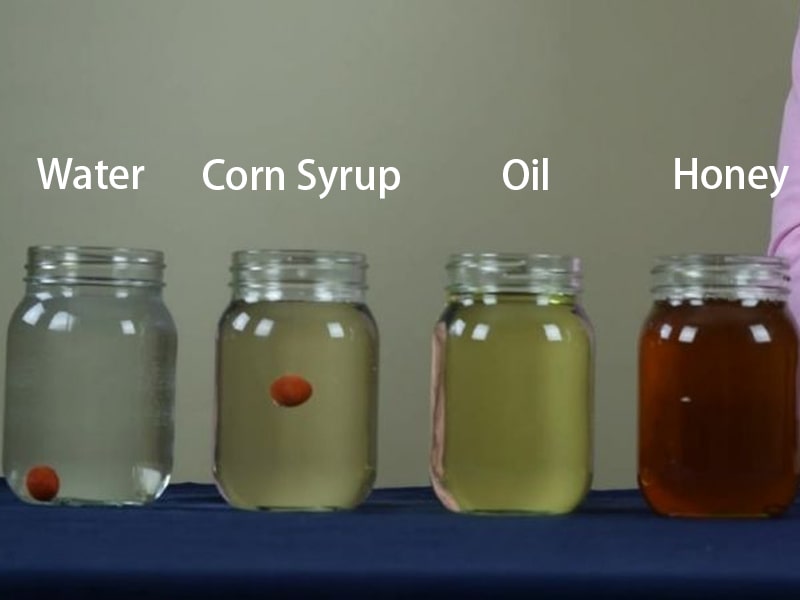
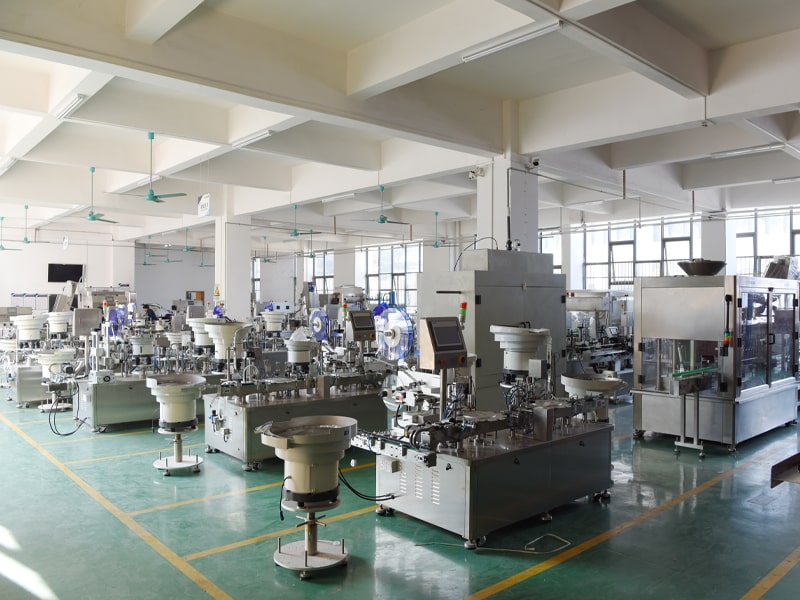
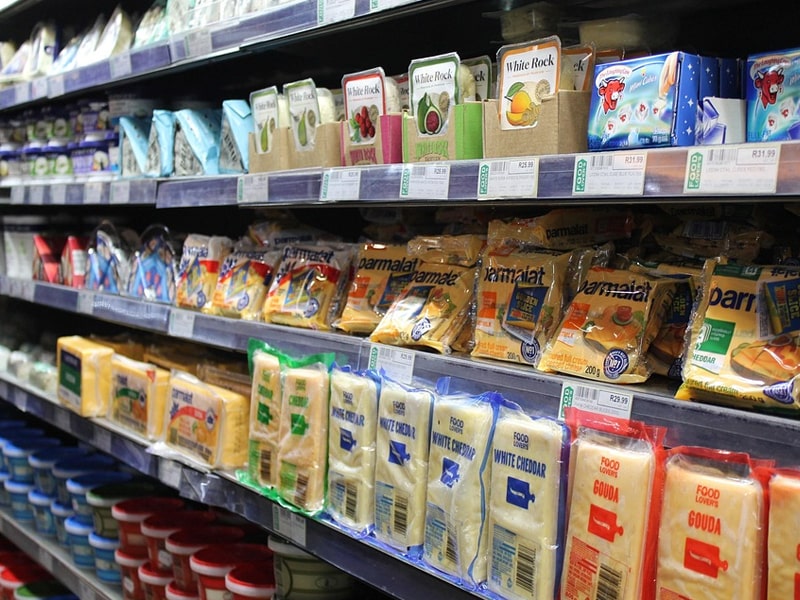

Comments